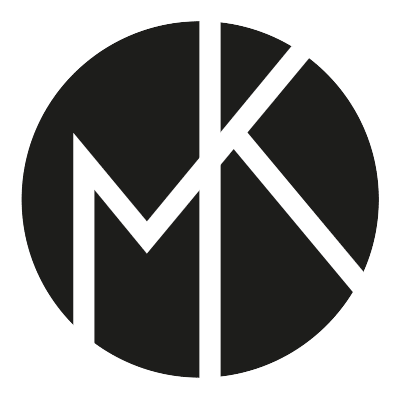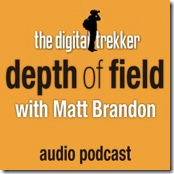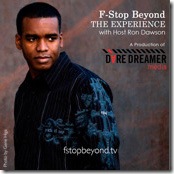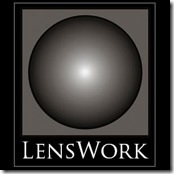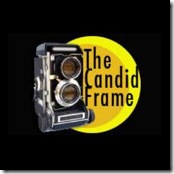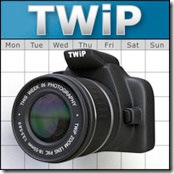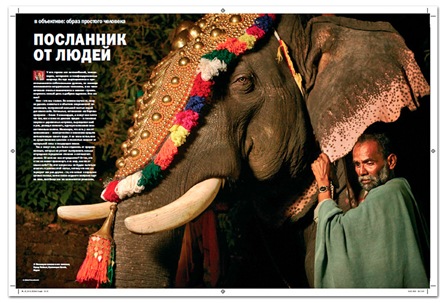Natural light is the most powerful tool that we as photographers have at our disposal. The best thing about it is that it's free and available to absolutely everyone. The other great thing is that we don't need a boatload of expensive gear to take powerful images, once we understand how to use this tool, some of the images I've included as examples in this ebook were taken with my iPhone 4S (not the most powerful or expensive camera to say the least). No matter what camera you use - you can benefit from having a better understanding of natural light.
5 Great Photography Podcasts
Whenever I do a lot of post processing work in front of the computer monitor I tend to go a little insane, by a lot I mean something like 10 hours a day for a couple of weeks straight. I’m sure that I’m not the only one on whom this has an “adverse” affect.
To minimize the “pain” I often listen to music, but I feel that a more productive thing to do is to listen to certain podcasts, specifically podcasts that relate to the industry which I am a part of. I already mentioned a few months back that I listen to a lot of tech podcasts, which are all very relevant and keep me in the loop, as far as what I need to pay attention to. Through these I know what new technological developments may either make my life easier as a photographer (and now as an eBook writer) or what new developments are game changers and need to be considered in order to keep growing. (think iPad)
Of course the great thing about Podcasts is that you can listen to them while doing other work, you absorb information and often learn new things without losing time. And so without further-a-do I want to mention 5 podcasts which are very relevant to almost anyone working in the photography industry or wanting to make a living in it. The podcasts are not ranked from best to worst, but rather alphabetically.
Note: I haven’t figured out how to link these directly to iTunes, so you’ll have to search for these podcasts within iTunes yourselves.
Matt Brandon’s “Depth of Field” is without a doubt one of my favorites. Most of his guests are professional photographers with a lot of wisdom to offer to the listener. I love his casual interviewing style and the fact that he often asks the less typical questions. Matt also doesn’t just agree and play along with the people he interviews, but frequently questions them (without coming off as overly critical) and this generates interesting discussions. In short – great stuff in this podcast!
“F-Stop Beyond” has been a solid podcast for some time now, it’s been renamed to “F-Stop Beyond – The Experience” and it seems like the quality will remain high. There are some successful, big name photographers from various parts of the industry that make appearances on this podcast. I feel that it’s always valuable listening to anyone who has succeeded at something that I’m interested in, so “F-Stop Beyond” is definitely in my iTunes library.
Brooks Jensen’s “Lenswork” podcasts are an extension of Brooks’ beautiful photographic magazine of the same name. The podcasts are monologues of Brooks’ thoughts on photography, the creative process and random things in life that offer valuable lessons to any creatives. While listening to one man speak his mind is not everyone’s cup of tea, I love listening to Brooks’ stuff. For any aspiring photographers in particular there’s a whole lot of wisdom in what the man says.
“The Candid Frame” is a podcast by Ibarionex R. Perello. It’s similar to “F-Stop Beyond” except that I feel that Ibarionex often digs a little deeper and reveals more of the inner world of the photographers he interviews. This is sometimes really fascinating and beneficial to the listener, as those who are particularly keen will learn a lot from hearing what drives and inspires some of the world’s most interesting and successful photographers.
“This Week in Photography” of “TWiP” is another favorite of mine. The podcast is hosted by Frederick Van Johnson and a panel of a few photographers (they sometimes change quite often). The focus of this show is on the photography industry, the panel discusses the latest news, developments, talks about gear and there’s usually an interesting and often very eye-opening and insightful interview with a pro photographer or someone from the industry. For those who are working in the photo industry, this podcast is an absolute must.
Well, that’s all for now folks. If you have any other great photography podcasts to suggest, please do so.
Back from my hiatus
Hi folks! Wow, it’s been about 3 months since my last post. I realize that posting once every 3 months is a great way to lose most of my readers, but hey, what can I say, I haven’t had much writing left in me lately.
The thing is, I had undertaken a pretty big project. In collaboration with The Digital Photography School I’ve written another eBook, this time on Travel photography. That’s a pretty darn broad topic, so naturally it took me a while to get the whole thing done (though longer than I expected). In the process I just really didn’t have the energy to write anything on my own blog, nor did I take any photos. I don’t know how the heck guys like David duChemin (at Pixelatedimage.com) manage to blog a few times a week, but then again even he has been pretty sparse of late, due to all the traveling.
I also have to update all of you who applied for the “Join me” trip on a motorcycle from Bali to the tribal villages of Flores. Sorry to say, but it ain’t happening this year, nor is the other private photo workshop. I’m kinda surprised by how much interest these generated, since I never actually advertised them anywhere, nor even blogged about them. In any case, I think I’m most likely going to stay away from the face to face, non-virtual workshops for the next couple of years. I just feel like I want to use my time on the road to educate myself for now, to keep taking my own photography to the next level. Nevertheless, I’ve put a lot of my knowledge into the Travel Photography eBook, so if you’re hungry for knowledge, if you want to know how I do things, it’s definitely worth checking out, stay tuned here and on the Digital Photography School site this week to find out more.
As I mentioned, I haven’t done any photography or at least no significant photography since I’ve been back in Sydney. So that’s about 4 months without doing any meaningful photo taking. Such is the nature of this way of business/lifestyle – you take photos for months and then you work on them for months, so that you can actually get them out into the marketplace or in front of the public.
I recently finalized a contract with Corbis Images, so now I’ll be represented by two of the world’s “favorite” stock photo agencies. This means more work sorting through the images and that’s exciting and overwhelming at the same time.
Now to some fun news, I hope to begin adding video content to this blog starting from my next journey. It’s something that I want to make a big priority in the not too distant future. It’ll be a mixture of adventure/travel videos and some behind the scenes stuff, which will hopefully be educational for all the aspiring travel photographers or for just anyone curious about what happens on such trips, how the photos are actually created.
Ok, so that’s about all for today. I’ll be blogging regularly again. To all of you who haven’t forgotten about me – thank you. To all those who have – I hope that you’ll find the new content of this blog interesting enough to come back.
For now I leave you with an image from a Ukranian magazine “Digital Photographer”. They did a pretty long story on my travels and images a couple of months back. The whole thing is kinda funny because they interviewed me in English (easier for me than Russian, though I speak it) and the way they translated what I said made me sound much more intelligent than I actually am, or perhaps more well-spoken in Russian. The title of the feature is “Messenger from the people”. If any of you are in that part of the world, perhaps you can get your hands on the magazine and check it out.
Ok, off for now, but I’m back in the blogosphere, so stay tuned.
“Seeing the Light”: Making the most of available light and minimal equipment – the eBook
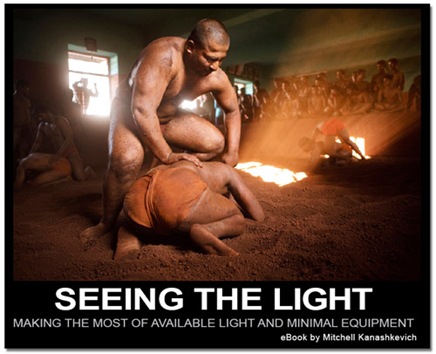 At long last here it is, my new eBook on working with light! I think the title is pretty self-explanatory. You can see some sample screen grabs below and HERE you can download the sample PDF (845kb).
At long last here it is, my new eBook on working with light! I think the title is pretty self-explanatory. You can see some sample screen grabs below and HERE you can download the sample PDF (845kb).
You can buy it HERE or click on the title image. The price is again US$12. After payment you’ll be automatically taken to the download link.
I wanted this eBook to be useful for photographers of different levels, from those who have just begun to understand how critical light is to photography, to the more experienced individuals ready to dive into the world of artificial lighting and try new things.
The information inside should be relevant to anyone who’s passionate about light, but wants to stay compact – that includes travel and documentary photographers, wedding photographers, portrait photographers and even low-budget commercial shooters.
In short here’s what the readers will learn after going through the eBook:
- How to create “believable” looking artificial light with a single off camera flash in a softbox or with a reflector
- How to get the most out of available light – with and without the help of artificial light
- Gain a deeper understanding of natural light and how it can be used creatively, even in challenging situations
- How to “sculpt” with artificial and natural light
- How to light scenes with a flash without killing the existing atmospheric light
All you need to purchase the eBook is HERE.
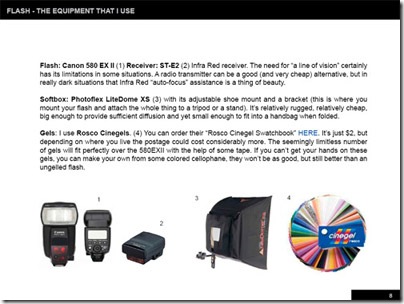 List and explanations of my equipment
List and explanations of my equipment
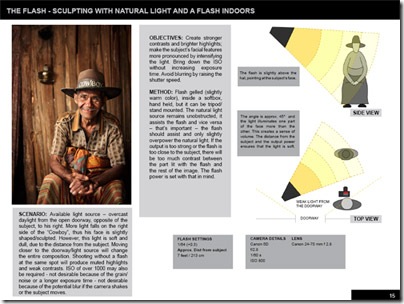 Breaking down images with descriptions and diagrams
Breaking down images with descriptions and diagrams
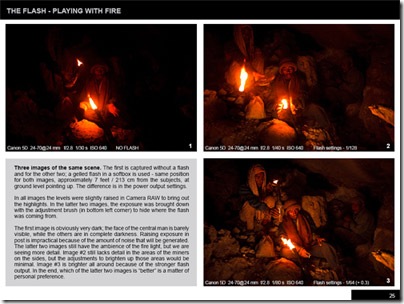 Comparison - Images taken with a flash and without
Comparison - Images taken with a flash and without
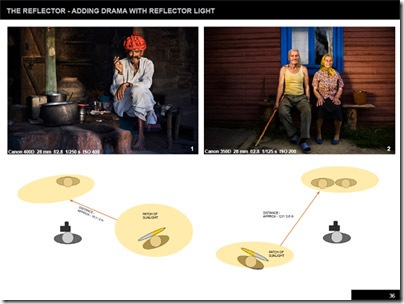 Diagrams for working with the reflector
Diagrams for working with the reflector
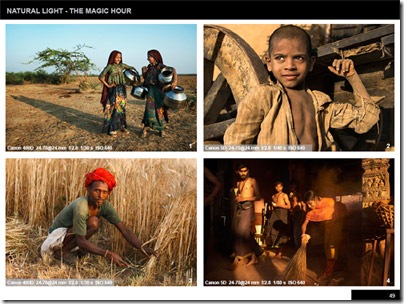 Sample images taken under natural light with complete Exif data
Sample images taken under natural light with complete Exif data
If you like the e-book or know photographers who may find it useful – please spread the word. As with the previous eBook all the income from this will be used for good :) – i.e. photography and more travel, which will also result in more photography and more viewing pleasure for the readers of this blog. :)
Use the bar below to spread the word.
Demystifying Post-Processing (to an extent)
I said in the last post that I would put up some “before” and “after” images that would give people an insight into how much post-processing I do to my photographs, so here we go. As with the last post this isn’t a tutorial, but those who have a better than basic understanding of post-processing may get some ideas from this post. The “before” images which are unprocessed, as interpreted by “Caputre One”, they are on top and I have listed the key things which I have done with the post-processed "after" photographs. Click on each image for a closer view.
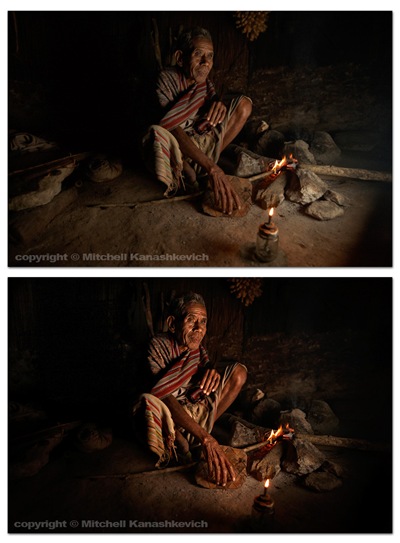
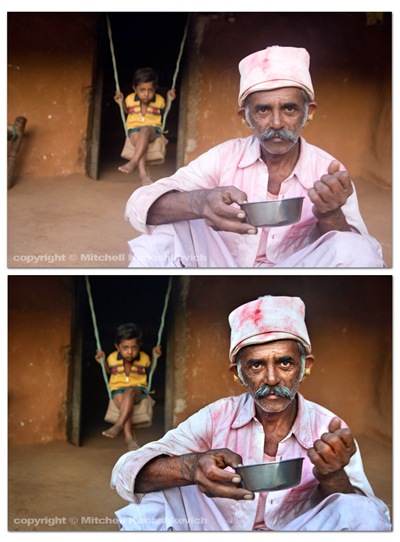
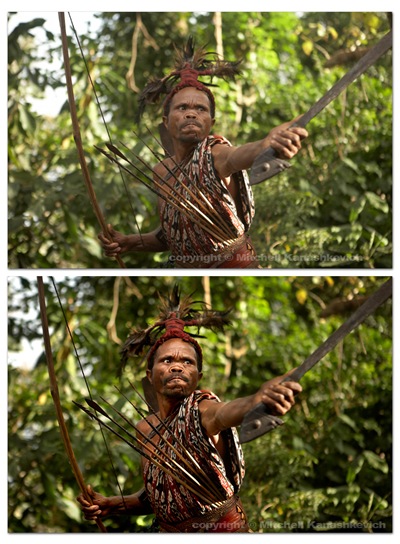
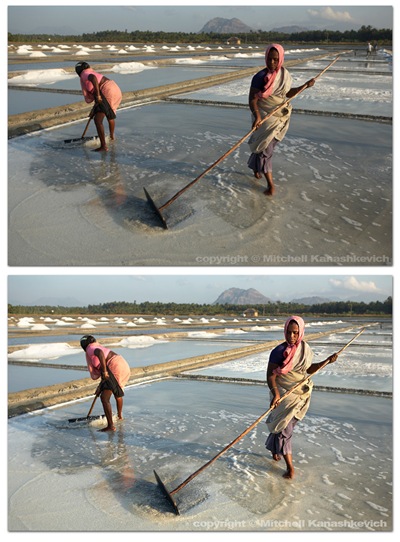 The above images have pretty much been worked on in the same way.
The above images have pretty much been worked on in the same way.
- Slight cropping and sometimes rotating.
- Multiple versions of the same image created at varying exposures, later made into one in Photoshop. The reason – bringing out the details in highlights and shadows.
- Curves, levels adjustment layers created, I paint inside of these wherever I feel needed, to selectively darken and lighten areas
- Shadows and highlights – to further bring out the details.
- Dodging and burning for finishing touches.
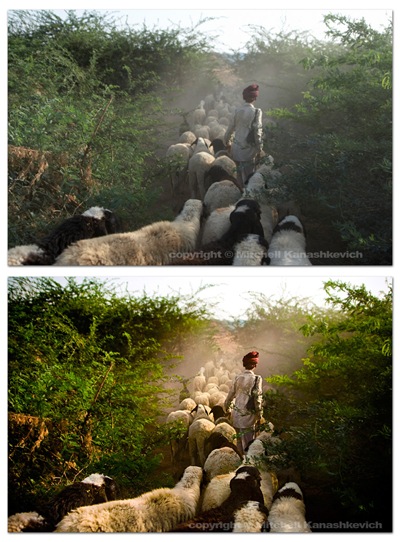 The image above had a little more done to it. On top of the previously mentioned processes I played around with the saturation and the white balance in the RAW file. More intense dodging and burning was required to add a bit of drama to the scene, to make the image look the way I remembered seeing it.
The image above had a little more done to it. On top of the previously mentioned processes I played around with the saturation and the white balance in the RAW file. More intense dodging and burning was required to add a bit of drama to the scene, to make the image look the way I remembered seeing it.
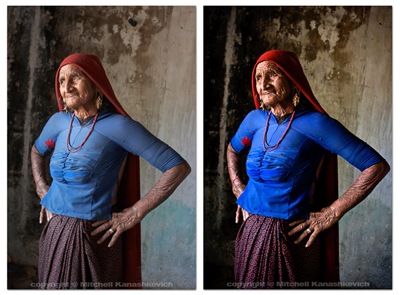 The process for the image of this grandmother was similar to the first few and I chose to clone out a little black pipe that stuck out of the wall (top/center/right). I’m not a huge fan of cloning things out and some may argue that once things start to get modified on this level, the photograph becomes less “pure”. If it’s something small that doesn’t make or break the image, but bugs me I’ll clone it out without thinking twice, if it’s something that can radically change an image I’ll usually be a bit more cautious.
The process for the image of this grandmother was similar to the first few and I chose to clone out a little black pipe that stuck out of the wall (top/center/right). I’m not a huge fan of cloning things out and some may argue that once things start to get modified on this level, the photograph becomes less “pure”. If it’s something small that doesn’t make or break the image, but bugs me I’ll clone it out without thinking twice, if it’s something that can radically change an image I’ll usually be a bit more cautious.
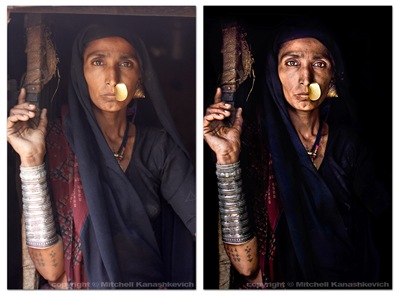 Out of the images I have presented here this one required the most work. I felt that I really needed to bump the contrasts and to dramatically darken certain parts of the photo. This sRGB conversion has a limited color range and is actually a little too dark (you loose details in the material), but you get the general idea. Same processes as stated above and just really a lot of playing around and seeing what works and what doesn’t.
Out of the images I have presented here this one required the most work. I felt that I really needed to bump the contrasts and to dramatically darken certain parts of the photo. This sRGB conversion has a limited color range and is actually a little too dark (you loose details in the material), but you get the general idea. Same processes as stated above and just really a lot of playing around and seeing what works and what doesn’t.
That’s about it. As you can probably gather I like to keep my images looking as realistic as possible on the one side and as dramatic as possible on the other. I try to find the right balance. There are plenty of photographers who like to make their images look more dramatic, more saturated, more contrasty, to a point of surreal. There are also those who like to selectively de-saturate parts of an image, but to keep contrasts high. Lots of particular “looks” are popular these days and many people try to emulate them. Sometimes these “looks” work and sometimes they are boring, repetitive and unnecessary. I’m not really into stylizing my color shots too much. I feel that this is a bit of a fad and at times this stylization is used to mask crap light or inconsistent color. A great image will be great regardless of whether it has been realistically processed or stylized (when this is done well). A crap, stylized image may pass off as decent at first glance because it grabs you with the dramatic, surreal color, but hang it on the wall and look at it for a few days and you’ll become very bored. Maybe I am somewhat conservative - for me it’s either the dramatic, yet realistic post processing approach or if I want to do my own kind of stylizing – it’s black and white. I do quite a bit of black and white and I will post something about that in the future.
